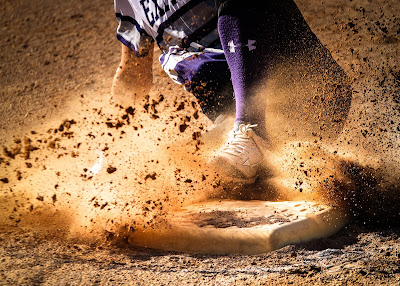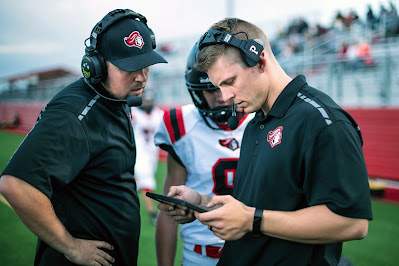You must be able to recognize and comprehend the many sports technology applications. How technology is applied in sports by release and reverse to enhance performance, record time, and distance, and discuss the favorable and unfavorable effects of technology on sport
Nearly every aspect of the world of sport has been significantly impacted by technology. It affects how decision-makers make decisions and how performers prepare for performances and provide their best effort. How sports are covered by the media, and how athletes' performances are evaluated and documented.
The first skill you must possess is the ability to recognize the various sports technology platforms.
There are now three main advantages or applications of technology in sport.
First Move:
Performance improvement is the first one. Performance is often at the forefront in sports like Formula One and cycling. Technology: The development of cars and bikes ensures maximum streamlining and efficiency, with every component of the vehicles being evaluated and improved, from the tires to the helmets. In this procedure, wind tunnels are very helpful since they allow engineers to analyze and make adjustments.
The vehicle's aerodynamic characteristics. Technological innovation also helps to increase the performance of the athlete in accordance with the laws of their sport by creating new and inventive athletic gear, including apparel, footwear, rackets, and balls. For instance, thanks to more advanced golf clubs and balls, the PGA Tour's standard driving distance has increased from 250 yards in 1980 to roughly 300 yards today.
Thanks to improvements in track surfaces, the advent of running spikes, and starting blocks, records in middle and long-distance running are continually broken. The development of lane ropes, guttering, and low-friction swimsuits has created significant advancements in swimming as well.
Additionally, technology has impacted how we train or get ready for competition. For instance, artificial habitats that mimic the low oxygen levels seen at altitude are altitude tents or chambers. The tents are used by endurance athletes for training or even sleeping, which forces their bodies to manufacture more red blood cells and boosts their aerobic capacity.
Finally, multi-sensor or GPS equipment monitors an athlete's heart rate, speed, intensity, and motions around the playing field, enabling coaches to give detailed feedback and pinpoint areas that need improvement through additional training.
Second Solution:
The second application of technology in sports is in decision-making by authorities. Hawkeye, sometimes known as ball tracking technology, is a sophisticated computer program that forecasts an object's trajectory or flight path. In badminton, it's used to assess whether a shuttle landed in or out, while in cricket, it's used to judge if the ball would have hit the stumps.
In sports, players are only permitted a certain amount of times every set to use hawkeye and contest the umpire's ruling. The same concept of ball tracking is used by goalline technology to judge whether a ball crosses the line and should be credited with a goal. A radio signal is promptly sent to the on-field referee's watch, making it vibrate, so as not to interfere with the game's flow.
In order to establish whether a basketball ball was launched before or after the buzzer and whether a cricket bowler overstepped the crease, resulting in a no-ball, slow-motion video is employed. Lastly, in cricket, it is possible to tell whether the ball made contact with the bat before being collected by a fielder by using infrared imaging equipment, sometimes known as hotspots.

Third Way:
Technology is also used to measure distances and times in sports like track and field athletics. In order to time a race with absolute precision, fully automatic time uses sensors in the starting blocks and line scan cameras with a laser line to stop the clock at the finish line.
A similar idea is applied when swimming, where touchpads are used to record times that are precise to one-hundredth of a second. Finally, the use of conventional equipment like tape measures is unnecessary since laser-based distance measurement systems can generate precise computer-generated readings. whenever a triple leap, javelin, or hammer throw is being recorded.
All those engaged have been impacted by the gradual integration of technology and sports in both positive and negative ways. Today's final learning goal is to describe the advantages and disadvantages of technology.

The four parties involved, starting with the performers themselves, from their points of view On the plus side, advancements in equipment and training methods have allowed athletes to get better over time and keep breaking records.
In addition, several sports now permit athletes to examine judgments that would have otherwise been biased against them thanks to hawkeye and slow-motion footage. However, because of a lack of financing, not all competitors have access to the most up-to-date equipment, giving athletes from wealthier nations an advantage.
Decision-making technology may potentially interrupt or slow down a game from the perspective of sport in general, which can distract a player.
Technology has made decision-making more fair and consistent, and it may even add drama and suspense to the process. Sporting technology also attracts additional funding, which can be used for development. The schedule of games may alter, and there may be more breaks, if investors, including media companies, seek greater power in exchange for their investment.
Additionally, decision-making systems are not perfect, thus mistakes are occasionally made. In some situations, these mistakes also require time to remedy, which might disrupt the game flow.
Media innovations have benefited the audience because viewers at home now have access to professional commentary, different camera perspectives, and slow-motion replays. They can observe how judgments are being made thanks to decision-making tools, which lessens annoyance and, in certain situations, gives even more drama and excitement.
In addition, hand, if viewers are using platforms with technology that the officials do not, they may notice mistakes or poor judgments, which would be problematic for both the sport and the officials. A player may still make mistakes even if they have no reviews left, which could be frustrating for the audience. In addition, only a limited number of reviews are permitted to keep play moving quickly.
Finally, officials have profited from technology as well because it makes it easier for them to communicate with their peers and make wise decisions. Naturally, this lessens unwelcome pressure from gamers and supporters who now understand that technology has the final decision.
Regrettably, officials may be undercut by reverse decisions as referees become overly dependent on these systems to make judgments. Sports technology is nothing new. I sincerely hope this article was helpful.





_11zon.png)

No comments:
Post a Comment